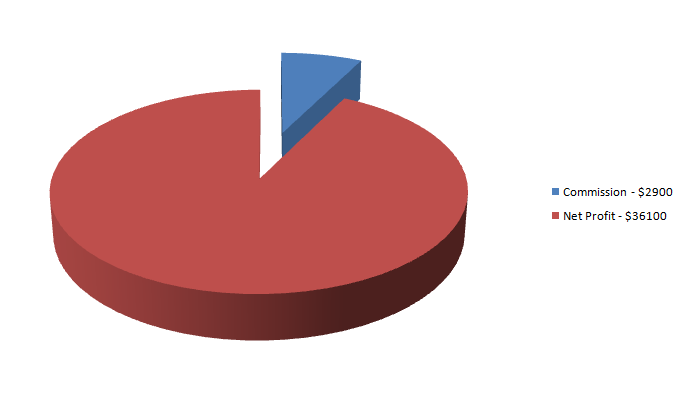Several months ago, I had discussions with a gentleman who was very interested in marketing a high-ticket-value service.
- He liked our ideas of presenting his services in a way that made sense to potential clients.
- He liked the way we would position his offering so that his most likely prospective customers would find him.
- He liked the “sales funnel” approach of creating a long-term relationship with customers where they take the initiative and proceed through the sales process on their own, reducing the amount of time he would have to spend cold calling and making sales appointments.
Then, when we got “down to brass tacks,” he put on the brakes.
He had initially verbally agreed in principle to the idea that ABCI would charge a 10 percent royalty on sales resulting from contacts brought in using the marketing system we would build for him, but then he started asking around.
“I’ve talked to some business associates, and they think that this marketing system of yours will work so well that you stand to make quite a bit of money.”
“Yes, sir, that’s the idea – ten percent gross for any new customers that we bring in. ”
“Well, I’m not comfortable with that.”
We parted amicably, and several months later, I was approached by a competitor. Since we’d already done quite a bit of research, I was ready to put wheels in motion pretty quickly. The second company (PMI Solutions LLC) has made a potentially lucrative contact before we’d even officially launched the website. Some of the planned features of their marketing funnel aren’t even in place yet, and they already have more business in the works than they were expecting.
ABCI makes most of our income in the form of commissions and royalties.
When we contract with you to create a marketing strategy, we will estimate a compensation structure that may include fees and royalties of 5 to 30% of the gross new sales we bring in, depending on the role we play in the sales process. (More for products sold directly online where no salesperson is necessary, less when we turn leads over to a sales person.)
Why? Because our marketing strategies work, because commissions ensure that we only get paid when they DO work, and they give us an incentive to keep refining and making adjustments to the marketing systems we build until sales are at their peak. You get a long-term partner who literally has a stake in making your company successful and meeting your objectives.
Do I feel badly about selling to the first gentleman’s competition?
Not really.
Although I do wonder if I explained it well enough to start with.
Which is why I’m writing this article. I don’t understand why a smart businessperson wouldn’t “get it,” so it must be that I didn’t do a good enough job of explaining the concept. So, here’s a shot at breaking down the numbers:
Option One – Marketing on Your Own
Let’s say that you have a client that you’ve found on your own that purchases your services. You don’t have to pay a commission to anybody, so you keep the total amount.

| Client | Gross | Commission | Net |
| Client A | $10,000 | $0 | $10,000 |
| Total | $10,000 | $0 | $10,000 |
Option A Results – You Pay No Commission,
You keep $10,000 Total Net Profit
___________________________________________
Option B – Leveraging a Marketing Partner
Now let’s say that you have this one client that you’ve found on your own, and ABCI brings you three more clients using a marketing system that we’ve developed for your company.

| Client | Gross | Commission | Net |
| Client A | $10,000.00 | $0.00 | $10,000.00 |
| Client B | $10,000.00 | $1,000.00 | $9,000.00 |
| Client C | $8,000.00 | $800.00 | $7,200.00 |
| Client D | $11,000.00 | $1,100.00 | $9,900.00 |
| Total | $39,000.00 | $2,900.00 | $36,100.00 |
Option B – You Pay $2900 in Commissions,
You Keep $36,100 in Total Net Profit
______________________________________________________
Given these options, and assuming that you like and trust the people you do business with, would you choose Option A or Option B?
Any professor of a business course would tell you to take Option B. The most successful businesses are those that can recognize and leverage good relationships to benefit their company’s bottom line.
.
